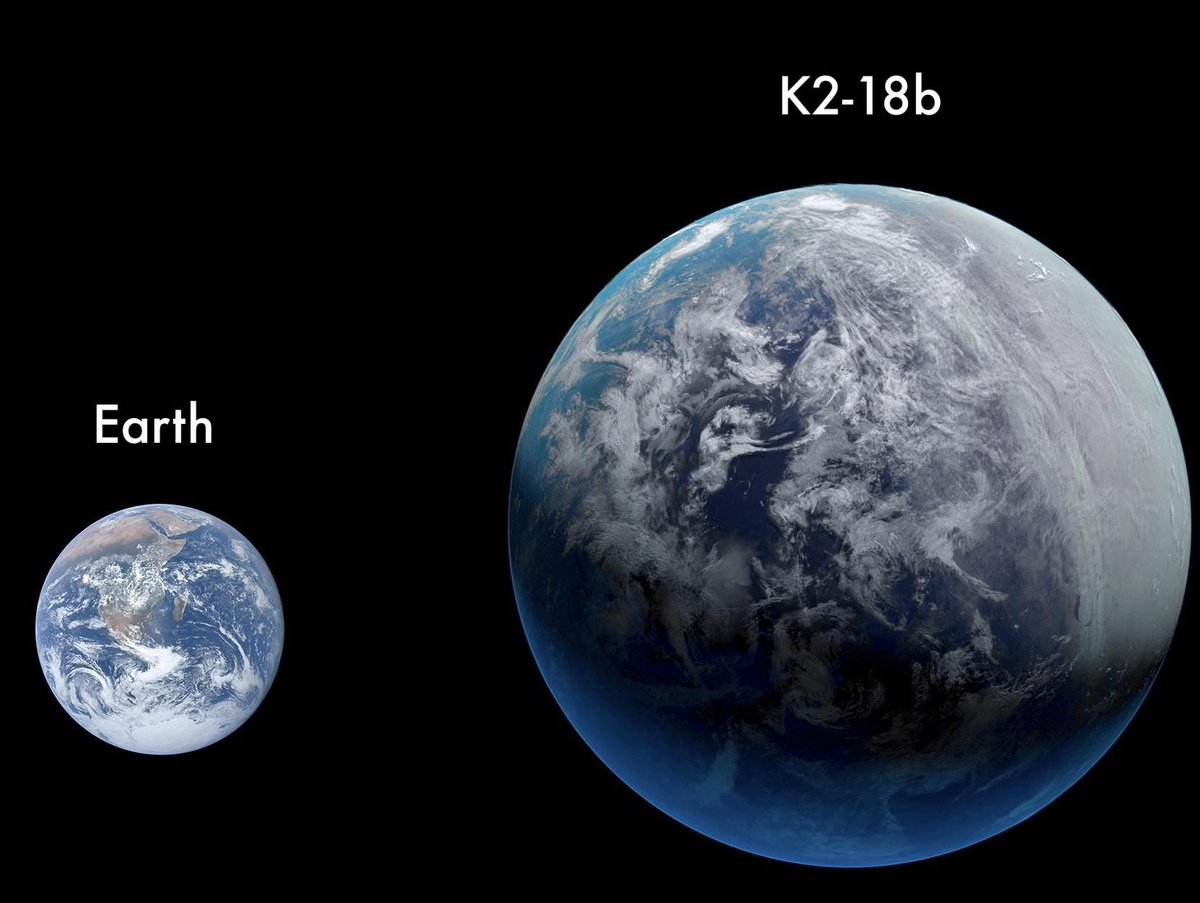Wow! It looks like us!
K2-18b, also known as EPIC 201912552 b, is an exoplanet orbiting the red dwarf K2-18, located 124 light-years (38 pc) away from Earth. The planet is a mini-neptune about 2.6 times the radius of Earth, with a 33-day orbit within the star’s habitable zone. This means it receives about a similar amount of starlight as the Earth receives from the Sun. Initially discovered with the Kepler space telescope, it was later observed by the James Webb Space Telescope in order to study the planet’s atmosphere.
In 2019 the presence of water vapour in K2-18b’s atmosphere was reported, drawing attention to this system. In 2023, the James Webb Space Telescope detected carbon dioxide and methane in the atmosphere of exoplanet K2-18b. JWST’s data has been variously interpreted as a water ocean or a magma ocean planet with a hydrogen-rich atmosphere, and a gas-rich mini-Neptune. K2-18b has been studied as a potential habitable world that, temperature aside, resembles more a gas planet like Uranus or Neptune than Earth. Wikipedia
Scientists are studying planet K2-18b, which discovered a gas produced only by living organisms
— NEXTA (@nexta_tv) April 28, 2024
Now, to confirm the finding, the James Webb Space Telescope will undertake hours of observations of the planet. The results of the study will be ready and published in a few months.… pic.twitter.com/fVhKCHMxHx
